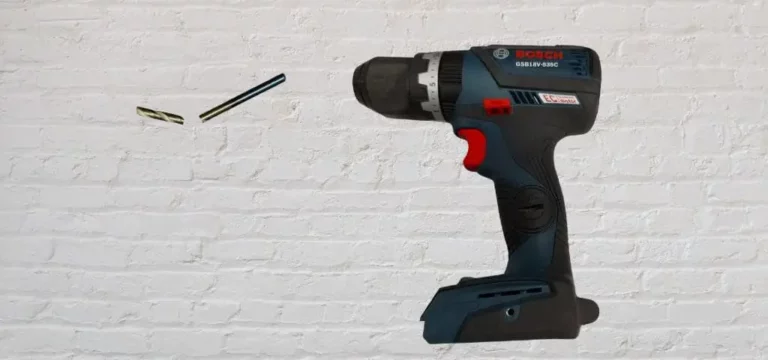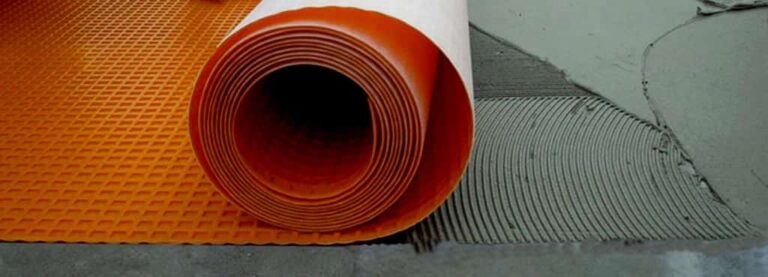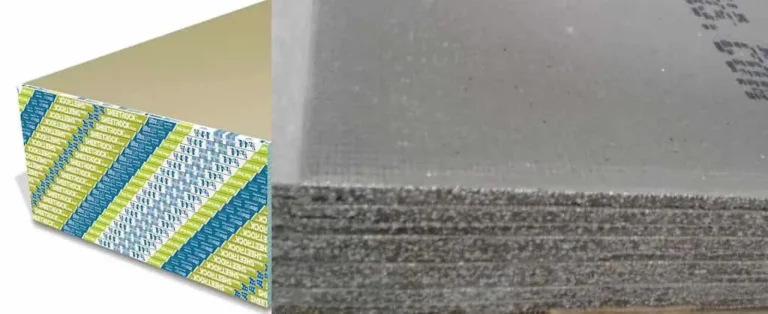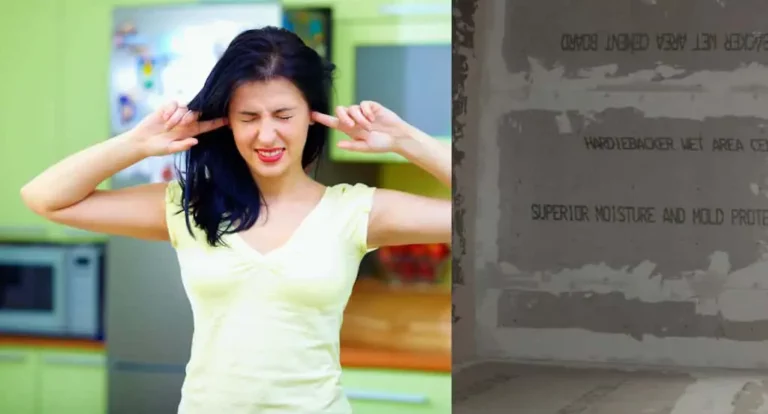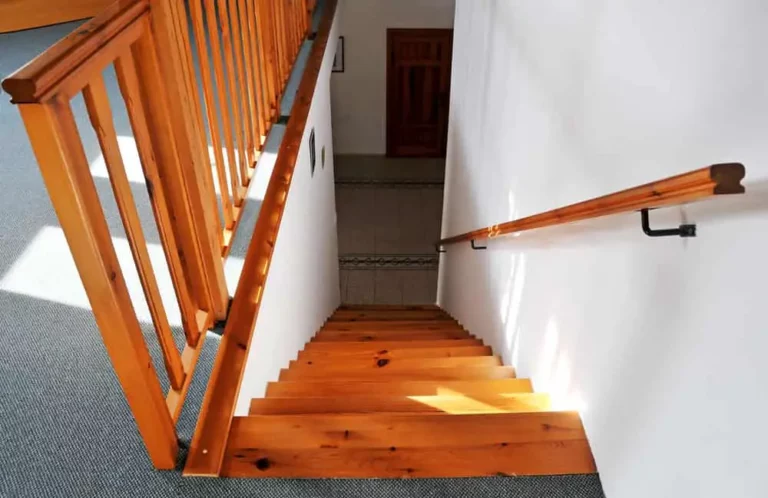Can You Install Ditra Over Cement Board?
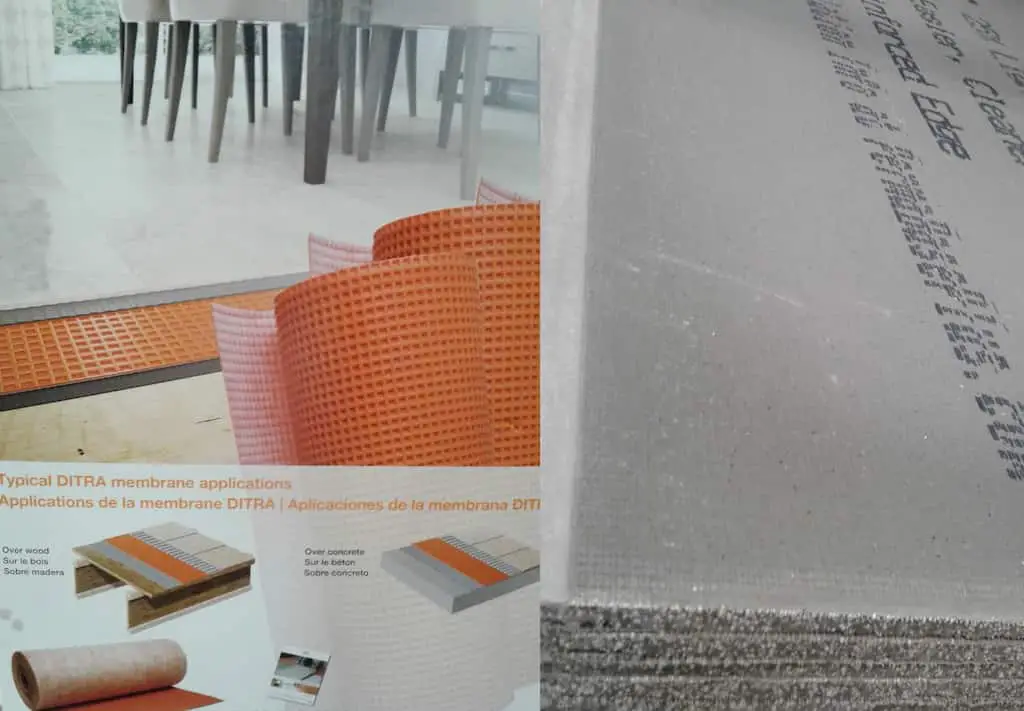
Tiling your bathroom or kitchen floor comes with many steps, but none as complicated as deciding on a backer. You want a secure floor that doesn’t crack or permit water damage, and both Ditra and cement board hold their own. Why not use them together?
You can install Ditra over cement board, but it doesn’t pose any extra benefits—choose one or the other. Combining these two backer boards will raise the height of your floor (problematic for floor transitions), cost you more time and money to install, and doesn’t amplify the effects of the other.
More isn’t always better in the world of home repairs and renovations, but it just might be when it comes to backer boards beneath your tile floors. So to find out whether you can (and should) install Ditra over cement board, read on.
Ditra vs. Cement Board
If you’ve never tiled a bathroom or a kitchen floor before, jargon like “Hardiebacker” or “Ditra” seems wildly confusing. So the first step in ensuring a solid DIY tiling is educating yourself.
Here’s what you need to know!
Ditra is a polyethylene orange mat sold in 50+ square foot rolls at home improvement stores. You’ll apply a layer of thin-set mortar atop your bathroom’s level subfloor, roll out the Ditra from edge to edge with the fleece side down, and then install your new tile as normal. Ditra is known as an uncoupling agent—meaning the tile and grout won’t come apart when the subfloor moves or fluctuates—and prevents water from seeping between tiles and causing your subfloor to rot.
Cement board (or Hardiebacker) is also sold in mat form and is meant to serve as a backer board before tiling. You’ll lie down the ¼”+ thick mats in a staggered pattern, attach them to the subfloor below with thin-set mortar, tape the joints of mats together to prevent gaps, and tile as usual. This type of backer will prevent water damage—though it’s not entirely waterproof—and costs about half as much as Ditra for a budget-friendly renovation.
By the way, if you decide to use Ditra in your project, I recommend to see all the options in Amazon
The Problems With Installing Ditra Over Cement Board
Ditra and cement boards both serve nearly the same purpose. So the time, money, and materials needed to add an additional layer of uncoupling membrane might not be worth it. Let’s talk about a few reasons why some contractors recommended against this.
It Raises the Height of Your Floor
It doesn’t matter whether you’re intentionally installing both Ditra and cement board or planning to lie Ditra over your bathroom’s current cement board layer. The additional layer of thin-set mortar (3/16″ thick) and Ditra (⅛” thick) can add an extra ⅜” inch to your floor’s height.
This raised floor can be problematic or flat-out annoying as a homeowner.
This height difference can cause an uneven transition if your tiled area meets a lower hardwood or carpeted area. Not only will this give the edge of the tiles a sloppy look, but it raises the height so high that you can’t hide it with a beveled threshold between the two rooms. You’re basically guaranteeing stubbed toes by combining Ditra and cement boards.
They Both Do a Similar Thing
Assuming you apply the joint tape on the cement board properly and completely waterproof the layer of Ditra, using both is pointless. They both keep water from leaking into your subfloor and causing rot while also keeping cracked tiles and grout at bay. So adding this extra layer of flooring will cost you:
- Money (another layer of thin-set mortar and Ditra at $1.50 a square foot)
- Time (at least 30 extra minutes to lie down a layer in the whole room)
- Materials (you don’t need both, so the extra layer essentially goes to waste)
There’s also the fact that using both cement board and Ditra doesn’t make your tile or stone floor any more secure, damage-proof, or waterproof. These are just extra steps you don’t need to take. And if the removal of your tile years down the road comes with physical damage, you might have to replace both the cement and Ditra board since they’re connected (not just one).
It Doesn’t Make the Floor Stronger
Many people assume that adding more layers before tiles make the floor more rigid and sturdy. But the truth is that, while Ditra and cement board will increase your floor height, it won’t provide anything of value—it’s called cement board, but it’s not the same as adding a layer of cement.
If you’re looking to strengthen the floor before adding Ditra, consider adding an extra plywood layer instead. This will get you to the recommended ½” thickness of subfloor and strengthen the floor so that you’ll pass the bounce test with flying colors. So long as the plywood is screwed in properly and a thick layer of thin-set mortar is used, you can install Ditra right on top with mortar.
Possible Benefits of Installing Ditra Over Cement Board
While Ditra over cement board doesn’t make logical sense in most scenarios, there are some reasons you might want to go ahead and do both. For example:
- The extra layer can give you peace of mind that your tile won’t crack and that water won’t get through to your subfloor.
- Unless there’s physical damage to the cement board, the additional layer of Ditra won’t cause any problems.
- You’ll get the supreme waterproofing of Ditra on the top layer of your backer board and the cement board’s durability and stability (thanks to the screws and joint tape).
- This layer could add height to your tile floor, useful if you had to remove a layer of your subfloor and don’t want your floor to be uneven between rooms or not reach your vanity.
- There’s a current layer of cement board in good condition, you don’t want to get rid of it, and you prefer Ditra anyway.
The list above shows that you can install Ditra over cement boards without irreparable damage, but it doesn’t provide any structural or visual benefits.
Does Ditra Replace Cement Board?
Ditra and cement board both play the same role in tiling floors, providing a stable base to attach your new tile to during a big home renovation project. So yes, Ditra can replace cement boards and vice versa.
If you’re caught between the two and are still unsure which is a better backer board for your next tiling job, look at the chart below. We’ll describe the benefits and specs of each.
| Ditra | Cement Board | |
| Cost | $1.50/sq. ft. | $0.75/sq. ft. |
| Install Process | Easy to roll out and installed atop your subfloor with mortar | Tricky to cut, piece together, screw down, and tape |
| Thickness | ⅛” thick | ¼” thick |
| Waterproof? | Yes | Absorbs moisture, but seems to dry well |
| Extra Floor Stiffness? | No, it’s made of flexible plastic material | Slightly, but not enough to make a noticable difference |
Unless you’re facing a strict budget, Ditra will rein superior in nearly every situation. It’s easy to install, doesn’t require the extra steps of adding joint tape or screwing it into the subfloor, and will keep the subfloor completely dry. And thrives on it’s own, no need for a cement board below.
Take a look at this video. It’ll show you just how simple it is to install Ditra over plywood.
Conclusion
Regardless of whether you use Ditra, cement board, or a combination of the two, one thing’s for sure: You need to be using some type of backer board. Though installing tile directly onto the plywood below will save you time and money, it never pans out well. This will lead to cracked tiles and grout and an eventual gutting of the floor to redo it once more.

